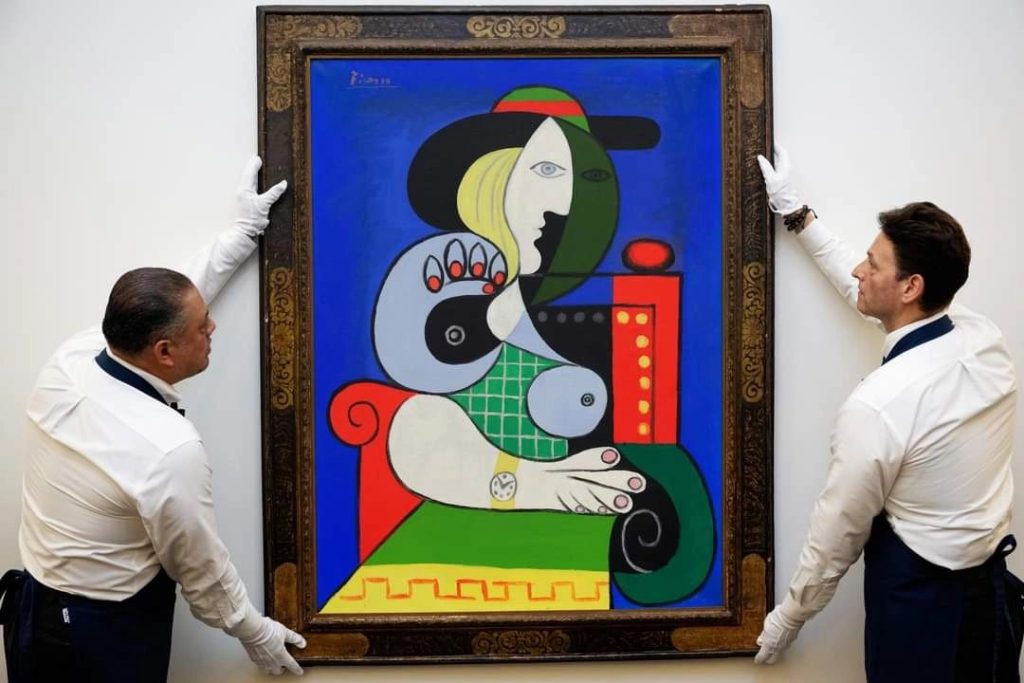Introduction
In a historic art auction event, Pablo Picasso’s iconic painting, “Femme à la montre,” soared to an astounding $139.4 million at Sotheby’s New York, marking it as the second most valuable work by the renowned artist ever sold at auction. The sale of this masterpiece, which is now among the top ten works ever sold at auction, was a highlight of the auction world this year. This magnificent artwork had never appeared at auction before and was the crowning jewel of the Emily Fisher Landau Collection.
A Glimpse into Picasso’s ‘Year of Wonders’
Depicting the artist’s love and ‘golden muse’ Marie-Thérèse Walter, the painting was executed in 1932, a year widely celebrated as Picasso’s ‘year of wonders.’ In fact, an entire museum exhibition has been dedicated to this pivotal year in the artist’s career. The exceptional sale of “Femme à la montre” establishes it as the most valuable work ever sold at auction from that remarkable year, surpassing the previous record set at $106.5 million for “Nude, Green Leaves and Bust” in 2010.
The Love and Inspiration Behind the Masterpiece
Picasso’s “Femme à la montre” was painted in August 1932, shortly after the conclusion of his first large-scale retrospective at the Galeries Georges Petit in Paris. Free from the stresses of the exhibition and the secrecy surrounding his clandestine affair with Marie-Thérèse, Picasso was able to fully express his love for her through his art. The story of Picasso’s first encounter with his young muse and their passionate love affair is legendary. Their initial meeting outside the Galeries Lafayette in Paris in 1927 marked the beginning of a relationship kept hidden for years due to Picasso’s existing marriage to Russian-Ukrainian dancer Olga Khokhlova.
The Significance of the Watch in “Femme à la montre”
Among Picasso’s vast body of work, only three major pieces, including “Femme à la montre,” feature a watch. Watches held immense significance for the artist in various ways. Picasso was a passionate collector of exceptional timepieces and owned three of the finest watches in existence. By depicting his young lover wearing one of his cherished watches, he bestowed upon her the highest honor, a gesture that deeply resonated with Marie-Thérèse, who held ‘an almost superstitious reverence’ for the watch. Simultaneously, the presence of the watch in the painting pays homage to the centuries-old tradition of Vanitas painting, with its symbolic references to the transient nature of both love and life.
The sale of “Femme à la montre” not only cements its status as a masterpiece but also underscores the enduring fascination and value of Picasso’s work in the world of art collectors and connoisseurs. As this remarkable artwork finds a new home, it continues to inspire and captivate audiences with its historical and artistic significance.
Feature image Courtesy: Sotheby’s
Reina Sofía Museum Lifts Ban on Photographing Picasso’s Guernica





